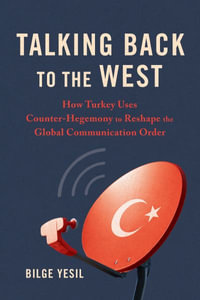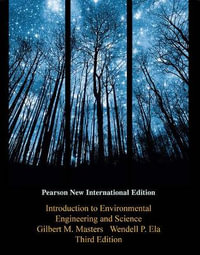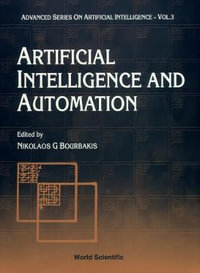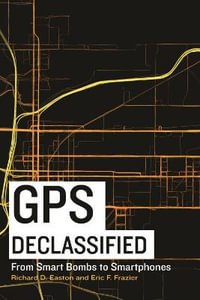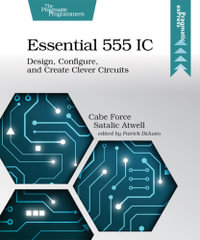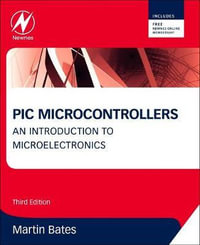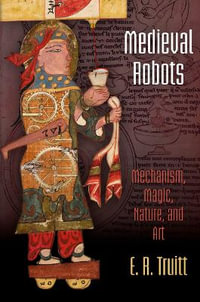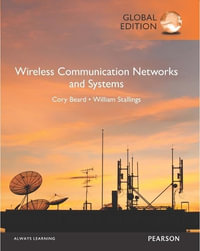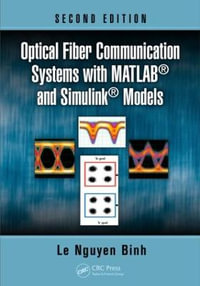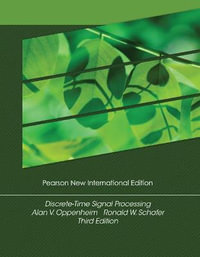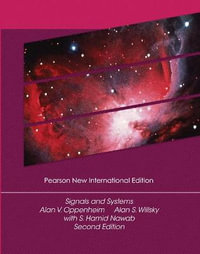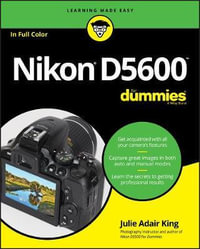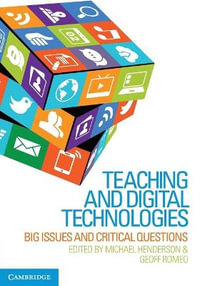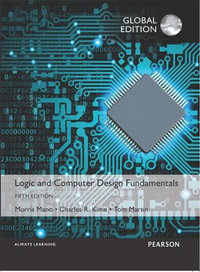
Electromagnetics and Transmission Lines
Essentials for Electrical Engineering
By: Robert Alan Strangeway, Steven Sean Holland, James Elwood Richie
Hardcover | 21 October 2022 | Edition Number 2
At a Glance
304 Pages
26.0 x 21.0 x 2.0
FREE SHIPPING
Hardcover
$262.43
Aims to ship in 7 to 10 business days
Textbook resource covering static electric and magnetic fields, dynamic electromagnetic fields, transmission lines, antennas, and signal integrity within a single course
Electromagnetics and Transmission Lines provides coverage of what every electrical engineer (not just the electromagnetic specialist) should know about electromagnetic fields and transmission lines. This work examines several fundamental electrical engineering concepts and components from an electromagnetic fields viewpoint, such as electric circuit laws, resistance, capacitance, and self and mutual inductances. The approach to transmission lines (T-lines), Smith charts, and scattering parameters establishes the underlying concepts of vector network analyzer (VNA) measurements. System-level antenna parameters, basic wireless links, and signal integrity are examined in the final chapters.
As an efficient learning resource, electromagnetics and transmission lines content is strategically modulated in breadth and depth towards a single semester objective. Extraneous, distracting topics are excluded. The wording style is somewhat more conversational than most electromagnetics textbooks in order to enhance student engagement and inclusivity while conveying the rigor that is essential for engineering student development. To aid in information retention, the authors also provide supplementary material, including a homework solutions manual, lecture notes, and VNA experiments.
Sample topics covered in Electromagnetics and Transmission Lines include:
- Vector algebra and coordinate systems, Coulomb’s law, Biot-Savart law, Gauss’s law, and solenoidal magnetic flux
- Electric potential, Ampere’s circuital law, Faraday’s law, displacement current, and the electromagnetic principles underlying resistance, capacitance, and self and mutual inductances
- The integral form of Maxwell’s equations from a conceptual viewpoint that relates the equations to physical understanding (the differential forms are also included in an appendix)
- DC transients and AC steady-state waves, reflections, and standing waves on T-lines
- Interrelationships of AC steady-state T-line theory, the Smith chart, and scattering parameters
- Antenna basics and line-of-sight link analysis using the Friis equation
- An introduction to signal integrity
Electromagnetics and Transmission Lines is an authoritative textbook learning resource, suited perfectly for engineering programs at colleges and universities with a single required electromagnetic fields course. Student background assumptions are multivariable calculus, DC and AC electric circuits, physics of electromagnetics, and elementary differential equations.
Preface xiii
Acknowledgments xvii
About the Authors xix
About the Companion Website xxi
1 Vectors, Vector Algebra, and Coordinate Systems 1
1.1 Vectors 1
1.2 Vector Algebra 4
1.2.1 Dot Product 4
1.2.2 Cross Product 7
1.3 Field Vectors 10
1.4 Cylindrical Coordinate System, Vectors, and Conversions 12
1.4.1 Cartesian (Rectangular) Coordinate System: Review 12
1.4.2 Cylindrical Coordinate System 13
1.5 Spherical Coordinate System, Vectors, and Conversions 19
1.6 Summary of Coordinate Systems and Vectors 25
1.7 Homework 27
Part 1 Static Electric and Magnetic Fields 31
2 The Superposition Laws of Electric and Magnetic Fields 33
2.1 Point Electric Charges, Coulomb’s Law, and Electric Fields 34
2.2 Electric Charge Distributions and Charge Density 37
2.3 Coulomb’s Law in Integral Form and Examples 38
2.4 Introduction to Magnetostatics and Current Density 47
2.5 Biot–Savart Law and Examples for Line Currents 50
2.6 Summary of Important Equations 56
2.7 Homework 56
3 The Flux Laws of Electric and Magnetic Fields 61
3.1 An Intuitive Development of Electric Flux and Gauss’s Law 62
3.1.1 A First Look at Electric Flux Density 62
3.1.2 Electric Flux and Gauss’s Law 63
3.2 Practical Determination of Electric Fields Using Gauss’s Law 65
3.3 Determination of Charge from Electric Fields 73
3.4 Magnetic Flux 74
3.5 Summary of Important Equations 78
3.6 Homework 78
4 The Path Laws and Circuit Principles 83
4.1 Electric Potential (Voltage) and Kirchhoff’s Voltage Law 84
4.1.1 Potential–Electric Field Relationship 84
4.1.2 Kirchhoff’s Voltage Law (KVL) 86
4.1.3 Dielectric–Conductor Electric Field Boundary Conditions 86
4.2 Capacitance 87
4.2.1 Determination of Capacitance 88
4.2.2 Dielectrics and Permittivity 90
4.2.3 Energy Storage in Electric Fields 93
4.3 Resistance 94
4.4 Ampere’s Circuital Law (ACL) 96
4.4.1 An Intuitive Development of ACL 96
4.4.2 Using ACL to Determine H 97
4.5 Inductance 100
4.5.1 Determination of Inductance 100
4.5.2 Magnetic Materials and Permeability 102
4.5.3 Magnetic Field Boundary Conditions 103
4.5.4 Energy Storage in a Magnetic Field 105
4.6 Summary of Important Equations 106
4.7 Appendices 106
Appendix 4.A Dielectric–Dielectric Electric Field Boundary Conditions 106
Appendix 4.B Development of Relative Permittivity 108
Appendix 4.C Development of Resistance 109
Appendix 4.D Introduction to Magnetic Circuits 111
4.8 Homework 113
Problems for Appendix 4.D 117
Part 2 Time-Changing Electric and Magnetic Fields 119
5 Maxwell’s Equations 121
5.1 Introduction to Time-Changing Electromagnetic Fields 121
5.2 Faraday’s Law 123
5.2.1 Lorentz Force Law and Induced Voltage 123
5.2.2 Time-Changing Magnetic Fields 125
5.2.3 Another Look at Kirchhoff’s Voltage Law 127
5.2.4 Another Look at the Inductor 128
5.2.5 The Ideal Transformer 129
5.2.6 Mutual Inductors 130
5.3 Displacement Current 133
5.3.1 Time-Changing Electric Fields 133
5.3.2 Another Look at the Capacitor 134
5.3.3 Mutual Capacitance 135
5.4 Chapter Summary: Maxwell’s Equations in Integral Form 136
5.5 Appendices 137
Appendix 5.A A Faraday’s Law Thought Experiment 137
Appendix 5.B Maxwell’s Equations in Differential Form 138
Appendix 5.C Continuity Equation and KCL 141
5.6 Homework 142
6 Transmission Lines: Waves and Reflections 145
6.1 Transient Waves in DC Circuits 146
6.1.1 Propagation of Waves in DC Circuits 146
6.1.2 Reflection of Waves in DC Circuits 148
6.2 Introduction to AC Wave Phenomena 153
6.2.1 Traveling Waves 153
6.2.2 Wavelength and Distance Considerations 155
6.2.3 Electromagnetic (EM) Fields on a Transmission Line 156
6.3 Reflections in AC Transmission Line Circuits 158
6.3.1 Reflected Waves and Measures of Reflection 158
6.3.2 Smith Chart: Impedance and Measures of Reflection 161
6.4 Scattering Parameters (S-parameters) 166
6.4.1 Power, Gain, and Loss 167
6.4.2 S-parameter Definitions 170
6.4.3 S-Parameter Examples 173
6.4.4 Vector Network Analyzer 174
6.5 Summary of Important Equations 177
6.6 Appendix: dBm “Dos” and dBm “Don’ts” 177
6.7 Homework 178
7 Transmission Lines: Theory and Applications 183
7.1 A Circuit Model for AC Transmission Lines 184
7.2 Voltage and Current Solutions for a Lossless Transmission Line 186
7.3 Interpreting the Voltage and Current Solutions 188
7.4 Lossy Transmission Line Solutions 192
7.5 Practical Transmission Line Calculations and Insights 193
7.5.1 Transmission Line Impedance Expression 193
7.5.2 Special Case of Lossless Transmission Lines 195
7.5.3 Standing Wave Patterns 196
7.5.4 Reflection Coefficient vs. Position 198
7.6 Smith Chart Revisited: Electrical Distance 199
7.6.1 Rotation on the Smith Chart – an Electrical Distance Perspective 199
7.6.2 Lossy Transmission Line Traces on a Smith Chart 202
7.7 Determining Load Impedance from Input Impedance 203
7.8 Summary of Important Equations 204
7.9 Appendices 205
Appendix 7.A Conversion of Maxwell’s Equations into the Telegrapher’s Equations 205
Appendix 7.B Development of the Particular Solutions for T-line Waves 208
Appendix 7.C Alternate Development of Reflection Coefficient vs. Position 209
7.10 Homework 210
8 Antennas and Links 215
8.1 Introduction to Antennas 216
8.1.1 An Intuitive Transition from a Transmission Line to an Antenna 216
8.1.2 Antenna Concepts 217
8.2 Uniform Plane Waves 218
8.2.1 Comparison of Uniform Plane Wave and Transmission Line Solutions 219
8.2.2 The Poynting Vector and Electromagnetic Wave Power 220
8.2.3 Polarization 223
8.3 Antenna Parameters 224
8.3.1 Antenna Gain 224
8.3.2 Radiation Patterns 225
8.3.3 Radiation Resistance and VSWR 226
8.4 Links 228
8.4.1 Free-Space Loss 228
8.4.2 Friis Transmission Equation for Link Loss 229
8.5 Summary of Important Equations 231
8.6 Homework 231
9 Signal Integrity 233
9.1 Introduction to Signal Integrity 233
9.2 Transmission Line Effects 234
9.3 Crosstalk 235
9.3.1 Electric and Magnetic Field Coupling 235
9.3.2 Shielding 236
9.4 Electromagnetic Interference 237
9.4.1 Overview 237
9.4.2 EMI Measurements 238
9.5 Power/Ground Switching Noise 241
9.6 Summary of Important Equations 241
9.7 Homework 241
Appendix A Alphabetical Characters, Names, and Units 243
Appendix B Greek Letters, Names, and Units 247
Appendix c A Short List of Physical Constants 249
Appendix d A Short List of Common Material Electrical Properties 251
Appendix E Summary of Important Equations 253
Bibliography 259
Select Answers to Homework Problems 261
Index 267
ISBN: 9781119881902
ISBN-10: 1119881900
Published: 21st October 2022
Format: Hardcover
Language: English
Number of Pages: 304
Audience: Professional and Scholarly
Publisher: John Wiley & Sons Inc (US)
Country of Publication: US
Edition Number: 2
Dimensions (cm): 26.0 x 21.0 x 2.0
Weight (kg): 0.83
Shipping
| Standard Shipping | Express Shipping | |
|---|---|---|
| Metro postcodes: | $9.99 | $14.95 |
| Regional postcodes: | $9.99 | $14.95 |
| Rural postcodes: | $9.99 | $14.95 |
How to return your order
At Booktopia, we offer hassle-free returns in accordance with our returns policy. If you wish to return an item, please get in touch with Booktopia Customer Care.
Additional postage charges may be applicable.
Defective items
If there is a problem with any of the items received for your order then the Booktopia Customer Care team is ready to assist you.
For more info please visit our Help Centre.
You Can Find This Book In

An Intuitive Guide to Compensating Switching Power Supplies
Apply Christophe Basso's Recipes on Loop Control
Paperback
RRP $54.95
$47.90
OFF
